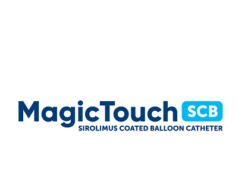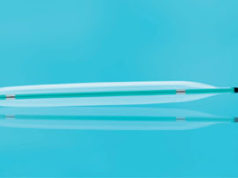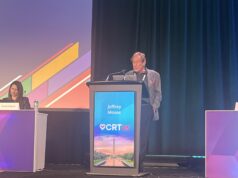
The first patient has been enrolled in the TRANSFORM II randomised controlled trial assessing the Magic Touch sirolimus-coated balloon (Concept Medical) versus a drug-eluting stent in the native coronary vessels. The index patient was enrolled on 16t December 2021 at Sandro Pertini Hospital (Rome, Italy) by the team of Alessandro Sciahbasi.
The International, multicentric, prospective, investigator-driven, open-label randomised trial will observe and evaluate the efficacy of the Magic Touch balloon in a head-to-head comparison with Everolimus-eluting stent (EES) considered to be a gold standard treatment, in 1:1 randomisation in the native coronary vessels. The trial is led by study chairman Bernardo Cortese of the San Carlo Clinic (Milan, Italy).
Alongside Cortese in the steering committee are Roxana Mehran (New York, USA), Alexandre Abizaid (Sao Paulo, Brazil), Stefano Rigattieri (Rome, Italy), Fernando Alfonso (Madrid, Spain), Jose Maria de la Torre Hernandez (Santander, Spain) and Peter Smith (Durham, USA).
In a press release, Concept Medical notes that the idea of intervention in small or mid-sized de-novo coronary lesion with a stent is neither desirable nor efficient, considering the heavy metal scaffolding of the vessel. The press release adds that a newer generation of interventionalists tend to be hesitant to load the vessel with a metal scaffold in this setting. Drug-coated balloons (DCBs) therefore offer a better option while treating native coronary artery lesions, the release notes.
A total of 1,325 patients will be enrolled, consisting of patients aged >18 years with a clinical indication of a native vessel percutaneous coronary intervention (PCI) eligibility (stable coronary artery disease [CAD] or acute coronary syndrome [ACS]). Native coronary artery lesion in a vessel with diameter >2mm and ≤3mm will be included with a maximum lesion length of 40mm further randomised for intervention with Magic Touch or EES.
The trial aims to evaluate Magic Touch versus EES with the primary endpoint of non-inferiority in target lesion failure (TLF), a composite of cardiac death, ischaemia-driven target-lesion revascularisation (TLR) and, target vessel myocardial infarction (MI) at 12 months.
The trial will also go on to verify and measure superiority of the study device in terms of net adverse clinical events (NACE), a composite of all-cause death, MI, ischaemic stroke, and major bleeding (BARC 3 or 5) as a co-primary end point. Follow up will be conducted at six months and yearly for five years. An optical coherence tomography (OCT) sub-study will be performed in a total of 70 patients, who will receive nine-month angio and OCT follow-up with Core-Lab analysis.
Concept adds that, over the years, drug-eluting stents have been the preferred option in native vessels however, with newer and advanced DCB technologies, operators now have access to an alternative without having to worry about metal in such vessels and can achieve good results.
The ongoing TRANSFORM 1 RCT comparing sirolimus and paclitaxel DCBs in small coronary vessels: Magic Touch (Concept Medical) and SeQuent Please (B Braun) is rapidly progressing with >50% enrolment already done and TRANSFORM II that follows is the perfect RCT to seek further answers in native coronary vessel treatment, the company adds.
Commenting on the latest trial, Cortese said: “We do not need to expect a stent-like result when we use a DCB; what we aim to, is to have similar results to drug-eluting stents, and possibly an improved result on the long term, since we do not implant metal, and metal from stents is associated with a small but continuous increase in adverse events year-on-year.”
Cortese adds: ”Regarding DCBs, at least when you use a reliable device, we have observed a flattening of the events curve after 18 months, so why not expecting better results after three to four years?”
According to Concept Medical, TRANSFORM II will bring to light data suggesting why a transition from stents to balloons is a necessity for some native coronary vessels.
Magic Touch has already received a breakthrough device designation from the US Food and Drug Administration (FDA) for the treatment of small coronary vessels as well as in-stent restenosis.











